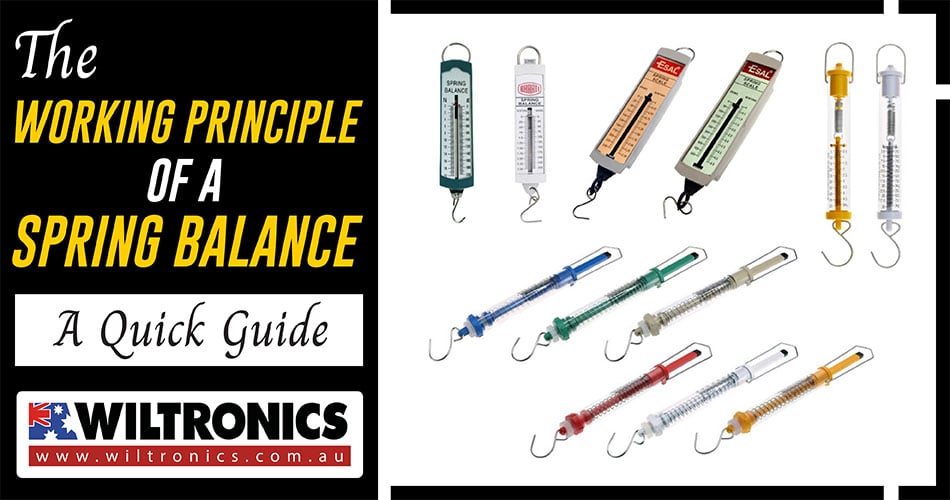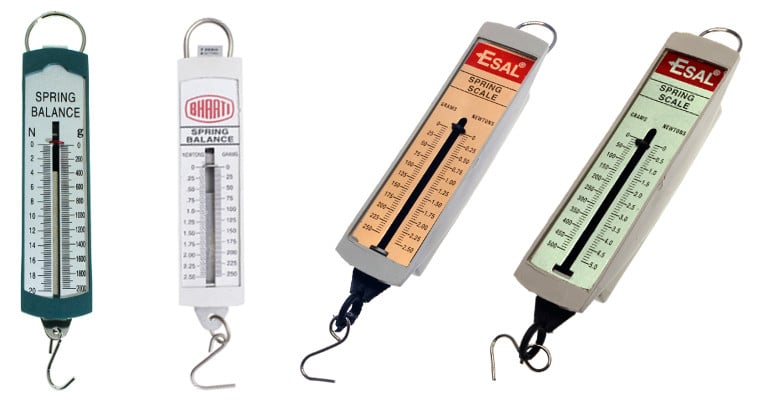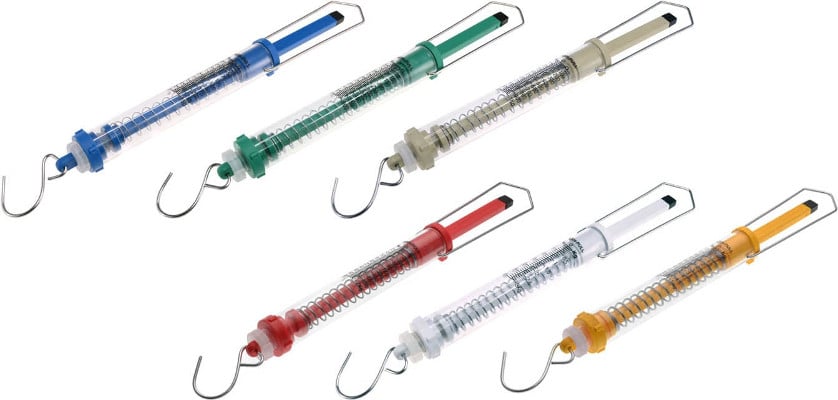The Working Principle of a Spring Balance: A Quick Guide
November 30, 2022

A spring balance turns out to be one of the keys to mass measurement in a laboratory setting.
Accuracy is an essential factor in research labs. Thus, weighing instruments are common and must be precise.
Thanks to their mechanical force, they provide reliable measurements of samples. Among the most common types is the Newton spring balance.
Spring balances measure force, and they operate on the principle of Hooke’s law. You can find them in different sizes which depend on the weight of the loads they can measure.
By studying their working principles, you may appreciate the way how the law works. Most of all, you can learn how to use it the right way for measuring.
What Is a Spring Balance?
The first spring balance was invented in Europe in 1771. The accuracy and reliability of models has greatly improved since then.
A spring balance comprises a spring fixed at one edge with a hook to join an object at the other. They are often used to measure the force exerted on an object.
This force is usually measured in newtons, a.k.a. the weight of an object, and achieved using Hooke’s law. It is also called Newtonmeters for this reason.
The force needed to stretch the spring equals the distance from its standstill position. That is what the law states in the principle of physics.
It restores force (F) produced by the spring relative to the distance it has been lengthened (x). In equation form, it looks like F=−kx. In contrast, the weight of an object is a measurement of its mass x gravity (w=mg).
Hooke’s Law Explained
When you touch an object, you apply a force on it. A great example is when you use a door handle to release a latch and open a door.
The handle rotates, and when you let it go, it returns to its original position automatically. You will understand more about it by examining how a spring balance works.
How Does a Spring Balance Work?
Spring balances consist of a cylindrical tube with a spring inside. There is a fixed end at the top of a spring balance and a free end at the bottom.
The latter is what moves when a force is applied to it. As objects are added, the spring stretches, and the resultant force can be read from the scale.
The most important feature of a spring balance is the spring, which extends when there is force. The larger the force, the greater the extension.
The relationship between the applied force and the expansion goes back to Hooke’s law. And to establish this relation, this is where measuring comes in.
You can do this by adding a series of masses to increase the force on the spring. Then, plot the force against the increase in spring extension.
The more masses increase the force applied to the spring balance, the more points you have to plot on the graph.
Get Your Spring Balance Here!

Spring Balance
Product code: ME4155
Ideal use for industry and education to measure force in both grams and newtons, and as a basic accelerometer.

Spring Balance Economy
Product code: ME4156
It features a plastic case that allows for mechanism observation. The aluminium front panel can be moved up or down for zero adjustments.
Moreover, a metal pointer, suspension ring, and load hook. Calibrated in grams and newtons.

Push/Pull Dynamometer (Spring Balance)
Product code: ME4153
This push/pull type features a rectangular plastic rod at the top for push-type loading. It also includes dual scale, zero adjustments, a suspension ring at the top & load hook at the bottom.
Balances are colour coded according to international standards.
The Bottom Line
Spring balances can give instant weighing results in grams and Newtons. The ideal tool for basic force measurement experiments in classrooms or labs.
For one, understanding frictional force and learning about Hooke’s Law. They can also be a useful tool in determining the difference between weight and mass.
© Electrotech Brands Pty Ltd 2022


Write a Comment
You must be logged in to post a comment.